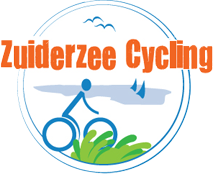Schokland
Schokland is a strip of land 4.5 km long and 400m wide. It used to be an island in the Zuiderzee. Now it has been incorporated into a polder.
Firstly, Schokland symbolizes this country’s battle against the water. Unfortunately, despite a sea barrier made of wooden poles – which you can still see remnants of – the last inhabitants of Schokland had to be evacuated by the government in 1859 due to poverty and disease through lack of clean drinking water (it had become saline). Moreover, their flooded wooden homes were beyond repair and had to be demolished. Yet, in 1938, the battle was taken up again when the Afsluitdijk was put in place and four years later Noordoostpolder had been created in what was once the Zuiderzee.
Secondly, the archaeological interest of Schokland in itself merits the World Heritage label. Visiting tourists are encouraged to try their hand at some amateur archaeology because there is still much to be found. Archaeologists have found traces of ten thousand years of human activity here.
In prehistoric times, Schokland was part of the mainland and inhabited by hunters, gatherers and fishermen. Around 6000BC it became a bog and got covered by a thick layer of peat. Later it was partly drained and prepared for agriculture. Then the sea advanced and washed away the surroundings until Schokland became a peninsula and eventually an island (around 1450 AD). Islanders retreated more and more onto the dwelling mounds Emmeloord, Ens/Middelbuurt, Zuidert and Zuidpunt. Fishing became a way to make a living. In 1825 a major storm left houses damaged and the population in poverty. The government evacuated everybody in 1859. But the battle against the water was won in the end: In 1942 the island was incorporated into the Noordoostpolder – a land reclamation project intended to create more farmland.
Schokland Museum is housed in a group of wooden houses (replicas) on the terp called Middelbuurt (Middle Neighbourhood); next to the church called Enserkerk (1834, original). This museum focusses on archaeology and geology. In contrast, Nieuw Land Museum in the town of Lelystad is the best place to learn about Schokland’s cultural history.
Our cycling holidays






